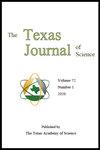空的集装箱,泛滥的河流:国家资助的围栏和对德克萨斯州鹰关的影响
Q4 Agricultural and Biological Sciences
引用次数: 0
摘要
这项研究使用水力建模来检查德克萨斯州伊格尔帕斯的两个新围栏部分的影响:一个集装箱围栏和一个国家资助的围栏部分,位于已经建模的联邦边境围栏的南部和下游。我们使用Nays2DFlood模型比较了不同重现期的围栏和非围栏条件,以确定围栏如何影响洪水范围、水深和流速。与非围栏条件相比,渠道和泛滥平原的水深更深,围栏线处的水深更浅。在围栏条件下,河道和泛滥平原内的水流速度较快,而围栏线处的水流速度较慢。这些影响有可能调整该位置和该区域下游的泥沙状况,改变水质和河道形态。人口统计分析还显示,特别易感人群,包括大多数拉丁裔、低收入人群、5岁以下人群和65-74岁人群,大量出现在这些围栏区域,因此容易受到洪水的影响。本文的补充材料可在线获取。本文章由计算机程序翻译,如有差异,请以英文原文为准。
EMPTY CONTAINERS, OVERFLOWING RIVERS: STATE FUNDED FENCING AND IMPACTS IN EAGLE PASS, TEXAS
This study uses hydraulic modeling to examine the impacts of two new fence sections at Eagle Pass, Texas: a container fence and a state-funded fence section south, and downstream, of the already modeled federal border fence. We used the model Nays2DFlood to compare fence and non-fence conditions at various recurrence intervals to determine how the fence is affecting flood extents, water depth, and water velocity. Water depth is deeper in the channel and the floodplain and shallower directly at the fence line when compared to non-fence conditions. Water velocity is faster within the channel and the floodplain and slower at the fence line during fence conditions. These impacts have the potential to adjust sediment regimes at this location and downstream of this area, altering water quality and channel morphology. Demographic analysis also show that particularly susceptible populations, including a majority Latino, low income individuals, those under 5, and those 65–74, are present in large numbers at these fence sections and are therefore vulnerable to flooding.
Supplemental material is available for this article online.
求助全文
通过发布文献求助,成功后即可免费获取论文全文。
去求助
来源期刊

The Texas Journal of Science
Agricultural and Biological Sciences-Ecology, Evolution, Behavior and Systematics
CiteScore
0.50
自引率
0.00%
发文量
2
期刊介绍:
Scholarly manuscripts reporting original research results in any field of science or technology, including science education, will be considered for publication in The Texas Journal of Science. Prior to acceptance, each manuscript will be reviewed by both knowledgeable peers and the editorial staff. Authors are encouraged to suggest the names and addresses of two potential reviewers to the Manuscript Editor at the time of submission of their manuscript.
 求助内容:
求助内容: 应助结果提醒方式:
应助结果提醒方式:


